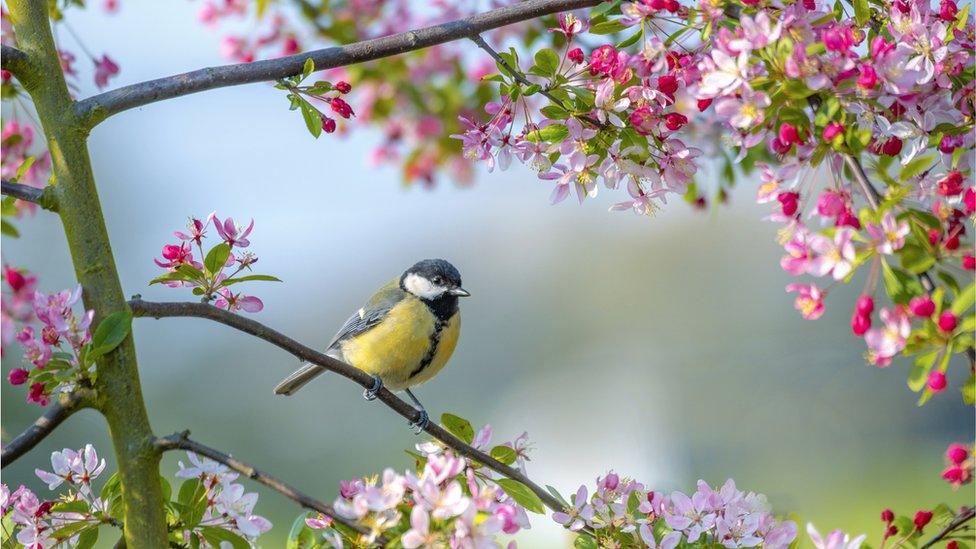'Spring coming early is worrying for wildlife', say charities
- Published
- comments

From barn owls preparing their nests, to early sightings of black oil beetles - spring is arriving in the UK a lot earlier than it used to.
A recent report into when flowers bloom found that spring has been creeping forward by almost a month in recent decades.
The Wildlife Trusts - which represent 46 local wildlife charities in the UK - say they have seen some "strange sightings" this year, and this is due to climate change causing warmer winters.
There are worries that an earlier spring in the UK is causing animals to come out of hibernation earlier, when there is less food available to them.
What signs of spring have you spotted this year? Let us know in the comments.
Snowdrops, shrubs and 'strange sightings'
Experts say plants are coming into flower about a month earlier than they have in the past
According to the Met Office, spring officially starts on 20 March 2022. However, there is evidence that flowers are blooming a lot earlier than that.
Spring is the time of year when you'll see snowdrops poking their heads above the soil, but experts say there have been sightings of them coming to flower really early this year.
And the snowdrops aren't alone. The Wildlife Trusts and The Woodland Trust have both reported a sudden increase of daffodils and other plants growing faster and earlier.
Alongside plants flowering earlier, the charities are reporting "strange wildlife sightings" including barn owls preparing to nest weeks sooner than expected, frogspawn emerging a month earlier than usual and the earliest ever sighting of a black oil beetle.
What does this all mean?
Experts are worried about a mismatch between animals nesting and their food supply
Lorienne Whittle, from the Woodland Trust, said signs of spring coming earlier should be seen as the "new normal" as the season started sooner than expected in both 2019 and 2020.
"There are signs we're heading the same way this year too," she added.
Charities are worried about this and say that climate change and global warming are causing a lot of these changes.
Kathyrn Brown, director of climate action at the Wildlife Trust, said: "Climate change causes warmer winters and this can wake animals out of hibernation when food is in short supply.
"We're also worried about a mismatch between animals breeding and the food supply for their young."
Brown gives the example of the great tit, which relies on caterpillars to feed its young.
"There is research that shows the caterpillars are emerging earlier but the great tits aren't matching that with earlier nesting so there's a timing mismatch; and that's worrying for the survival rates of chicks," she said.
What can we do to help?
According to Brown, there are some easy things people can do to give wildlife a helping hand.
To help animals adapt, she suggests leaving out fresh water and food for garden wildlife in the winter, feeding birds and looking after our natural environment generally by not littering and putting things in the bin.
Whittle agrees, saying that it's everyone's responsibility to "look out for the wildlife around us and notice the changes in your local area by writing down what you see."
What signs of spring have you spotted? Have you seen any unusual sightings? Let us know in the comments!
- Published2 March 2021
- Published22 May 2020
